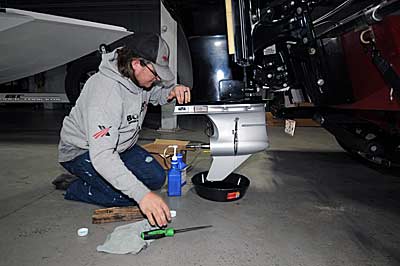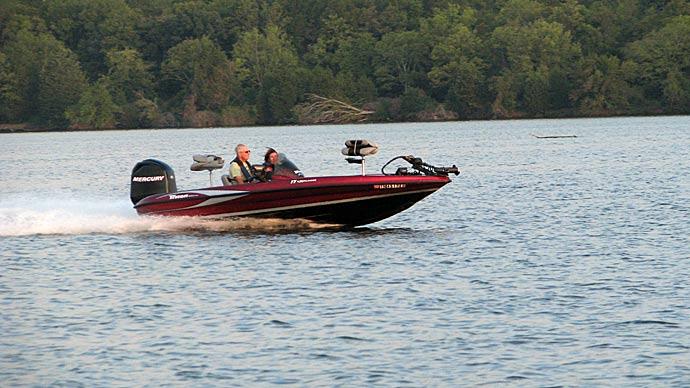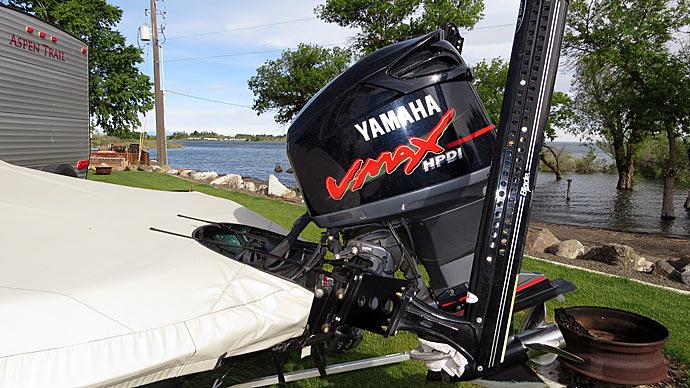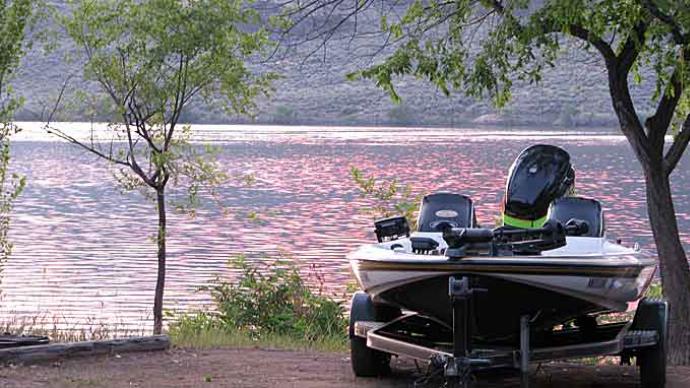
Fishing is tough enough when bass refuse to bite, but it becomes even more exasperating when boat problems arise.
Properly and regularly maintaining the components of your bass rig will prevent boat problems from complicating your fishing trips.
Electrical issues are the most common boat problems caused by a lack of proper battery maintenance, according to Taylor Morris, a marine technician for the Boat WrX boat dealership in Osage Beach, Mo. "The main problem is people don't leave their boat on a charger when it's not in use, and their batteries are dead, or the batteries are weak or don't last too long,” Morris says.
Morris offers the best battery maintenance tip to charge your batteries at the end of your fishing tip and charge the batteries again right before your next day on the water. The type of batteries in your boat determines how much more maintenance is needed to prevent electrical issues. "If you have maintenance-free batteries, obviously that is a lot better, but if you have flooded lead acid batteries, you need to check up on the water levels in the batteries and add more distilled water if needed," Morris says. The boat mechanic suggests that you check the battery water levels every six months.
Morris also advises you to check your battery connections. "I can't tell you how many times I have had service calls at people's docks or people come in (to the dealership) and tell me my graphs aren't working right or my motor won't start some times and a lot of it is just that their battery terminals are loose," Morris says. "Every so often, you should check your terminals to make sure everything is tight." Morris notes the new electronics with forward facing sonar are so “voltage sensitive” that loose battery connections leading to lower voltage can cause issues with electronics.
You can do some simple maintenance tasks, but a professional should do more complicated motor maintenance work. For example, Morris suggests using a prop wrench to remove your prop every five or six fishing trips to ensure no fishing line has wrapped around the prop shaft. The mechanic also recommends greasing the prop shaft splines to make the hub last longer.
Another self-maintenance task is changing the gear lube on the outboard’s lower unit. “Changing your gear lube is very doable at home," Morris says.
Changing the oil in newer outboard engines is also a simple self-maintenance chore. “With the new four-stroke engines, it is pretty easy for many people to do their own oil changes now,” Morris says.

The boat mechanic suggests that the outboard motor owner's manual will help guide you through maintenance procedures. “There is a lot of stuff inside the manual that tells you what to do for maintenance,” Morris says. “It will dad gum near walk you through an oil change on these new four strokes.”
Self-maintenance can also be performed on the trolling motor. Morris advises occasionally removing the trolling motor prop to check for fishing line wrapped around the prop shaft. He also recommends checking your electronics' transducer cables wrapped around the trolling motor shaft. "Make sure all your cables are in good shape and have not been thrashed on dock cables or pinched from the trolling motor mount," Morris says. "Make sure all your cables are free and clear when you go to store and deploy your trolling motor."
According to Morris, some outboard motor maintenance should be performed by a professional. "I don't like to tell people to do a lot of stuff under the (motor) cowling unless they are comfortable with it,” Morris says.
The marine technician recommends having a mechanic replace any belts on your engine. “All these motors have belts on them now, whether for running an alternator or what have you,” Morris says.
Whether you self-maintain your engine or use a mechanic, you should keep a regular maintenance schedule for your outboard motor. Morris suggests changing the motor oil and lower unit gear lube every 100 hours of use. In addition, spark plugs should be replaced every 200 hours, and the water pump impeller should be changed every 300 hours or three years, whichever comes first.
Morris notes that you should never have to change your motor's steering fluid, but you might have to add some eventually. "Every time you turn that motor back and forth, you will lose some power steering fluid through the O-rings and whatnot," Morris says. SeaStar hydraulic steering fluid is recommended for most bass boats, but Morris said you could use automatic transmission fluid if the SeaStar fluid is unavailable.
Fall is an excellent time to perform maintenance chores, especially if you have to winterize your boat. "When you put your boat to bed for the winter, plug that charger in and leave it all winter long," Morris says. “It is a maintainer meant to turn off and turn on when the batteries need a charge and trickle when they don’t need to.”
The marine technician also suggests changing the oil and gear lube in the fall. “You need to get the gear lube in the lower unit changed every fall 100 percent because if it is full of water and you don't know it, that water will freeze and bust your lower unit,” Morris says. “You also need to have your livewell, your bilge pump drained, and your bilge plug pulled. Those are the main things you need to look at when winterization for bass boats and outboards.”




